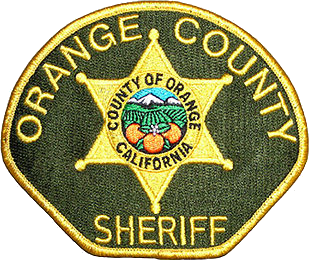Training and certification
Training can be rigorous and demanding, and may take years to accomplish. Members are generally proficient in wilderness survival, navigation, and first aid, and take advanced training in wilderness searching techniques including tracking, grid-searching for missing persons, and various types of rescue. There are also specialty areas including Incident Command System, radio communications, commissary and logistics provisioning, and progressive leadership advancement.
The first level of certification is that of team member and it is awarded only after an individual is able to demonstrate proficiency in search techniques, advanced wilderness navigation and depending on the region an Explorer post may be in a weekend of snow training. The extensive King County ESAR training course takes place during the winter months at Camp Edward (formerly camp Brinkley) in Snohomish County, Washington.
Once a team member is certified they can progress to the rank of team leader where they are in charge of a search team of anywhere from 2-15 individuals. Field leaders are in charge of the various teams in the field and report to the Operations Leader who in turn reports to the overall search coordinator who is responsible for coordinating all search and rescue efforts on a mission.
Certified teams are generally on-call 24 hours per day, 365 days per year, ready to assist local authorities, in cooperation with other SAR agencies. Many members go on to round out their skills with volunteer ski patrol, mountain rescue, Civil Air Patrol or as other professionals.

In the United States, community emergency response team (CERT) can refer to

Rope rescue is a subset of technical rescue that involves the use of rope, be it steel or cable rope, or more commonly used nylon, polyester, or other type of rope. Kernmantle rope as it is called, is available in various types: dynamic or static which is most commonly used in rescue and industrial rope work. Anchoring includes using specialty anchors, as well as things as simple as a length of chain, cable, rope, or webbing wrapped around a pillar, tree, boulder, or such. They provide the security and a point from which a person or subject can be belayed. Belaying is the act of protecting the climber, rescue professional, or subject in the event of a fall. Various other devices used, including friction rappel (lowering) devices, which acts as a braking device on the rope. They are used for lowering a load, a subject or oneself (rappelling). Pulleys can serve as a mechanical advantage, along with rope grabs, and other tools, to raise, or haul, a load up a vertical section, or across a gully or canyon. Pulleys systems are used in conjunction with the rope, rope grabbing devices, i.e.: Prusiks, or mechanical grabs, to capture the progress made during the lift. Since pulley systems are generally short in length, they are used in conjunction with a progress (raise) capturing technique, and a long rope; and a backup safety or belay. This specialized equipment is used to reach the subject(s) and safely recover them.
The School of Infantry (SOI) is the second stage of initial military training for enlisted United States Marines after recruit training. The ITB now called IMC went from a 59 day course to 14 week course. Since the initial training pipeline is divided between coasts, Marines from areas east of the Mississippi River usually graduate from MCRD Parris Island and move on to SOI at SOI East, while those from the western half of the nation attend MCRD San Diego and move on to SOI West at the Camp San Onofre area of Camp Pendleton in California. Female Marines are trained at both SOI East and SOI West. The School of Infantry's training mission ensures "Every Marine is, first and foremost, a Rifleman". At SOI, Marines with the Military Occupational Specialty of infantry are trained at the Infantry Training Battalion (ITB), while all non-infantry Marines are trained in basic infantry and combat skills at the Marine Combat Training Battalion. SOI marks a transition in the professional training of entry-level students from basically trained Marines to combat-ready Marines.

The nonprofit National Ski Patrol (NSP) is the largest winter education organization in the world. The NSP provides education, outreach, and credentialing related to outdoor recreation and safety. It is currently composed of more than 31,000 members who serve in over 650 patrols. NSP members, both volunteer and paid, ensure the safety of outdoor recreation enthusiasts in ski areas throughout the United States of America and certain military areas of Europe. For its dedication to the promotion of public safety in skiing and other winter sports, the group was granted a congressional charter under Title 36 of the United States Code in 1980.

Law Enforcement Exploring, commonly referred to as Police Explorers or Police Scouts, is an American vocational education program that allows youth to explore a career in law enforcement by working with local law enforcement agencies. Founded on July 12, 1973, it is one of the Exploring programs from Learning for Life, a non-Scouting affiliate of the Boy Scouts of America. The program is generally available to qualified young adults who graduated 8th grade and are ages 14 through 21.

The Alaska State Troopers, officially the Division of Alaska State Troopers (AST), is the state police agency of the U.S. state of Alaska. It is a division of the Alaska Department of Public Safety (DPS). The AST is a full-service law enforcement agency that handles both traffic and criminal law enforcement. The AST is also involved in apprehending fugitives as part of the Alaska Fugitive Task Force, an inter-agency collaborative of Alaska police departments that cooperates with police agencies throughout the United States and less commonly with Interpol in apprehending wanted men and women. Unlike many lower 48 states, the AST also serves as Alaska’s primary environmental law enforcement agency; troopers assigned to the AST’s Division of Alaska Wildlife Troopers are known as "Alaska Wildlife Troopers" and primarily serve as game wardens, although they retain the same powers as other Alaskan state troopers.

The Orange County Sheriff's Department (OCSD) is the law enforcement agency serving Orange County, California. It currently serves the unincorporated areas of Orange County and thirteen contract cities in the county: Aliso Viejo, Dana Point, Laguna Hills, Laguna Niguel, Laguna Woods, Lake Forest, Mission Viejo, Rancho Santa Margarita, San Clemente, San Juan Capistrano, Stanton, Villa Park, and Yorba Linda.
The United States Coast Guard is the coastal defense, search and rescue, and maritime law enforcement branch of the United States Armed Forces and is one of the country's eight uniformed services. It carries out three basic roles, which are further subdivided into eleven statutory missions. The three roles are:

The Maine State Police (MSP) is the state police agency for Maine, which has jurisdiction across the state and was created in 1921.

Visit, board, search, and seizure (VBSS) is the term used by United States military and law enforcement agencies for maritime boarding actions and tactics. VBSS teams are designed to capture enemy vessels, combat terrorism, piracy, and smuggling, and to conduct customs, safety and other inspections.

The Ventura County Sheriff's Office (VCSO), also sometimes known as the Ventura County Sheriff's Department (VCSD), provides law enforcement for the unincorporated areas of Ventura County, California, as well as several cities within the county. The cities that Ventura County Sheriff's Office provides police services for are Camarillo, Fillmore, Moorpark, Ojai, and Thousand Oaks.
Rampart Search and Rescue (RSAR) serves the communities within Adams County, Colorado. Its name is derived from the '70's TV show Emergency! where Rampart was the name of the hospital. Rampart search and rescue has been in operation since 1973. The mission of Rampart Search & Rescue is to provide search and rescue assistance, free of charge, to local, county, state and federal agencies during missing person searches, both man-made and natural disaster related emergencies.

The Maricopa County Sheriff's Office (MCSO) is the law enforcement agency that serves Maricopa County, Arizona, and is the largest sheriff's office in Arizona. The MCSO provides patrol services and criminal investigation to unincorporated areas of the county and operates the county jail system. It also serves as the primary law enforcement agency for any incorporated cities within the county that have contracted with the agency for law-enforcement services. The county sheriff is elected by the citizens and serves as the highest law enforcement official in Maricopa County. The current Sheriff of Maricopa County is Paul Penzone, elected in 2016. As a result of policies and practices under former sheriff Joe Arpaio the MCSO has received significant critical media coverage, federal investigation, and judicial oversight.

The San Bernardino County Sheriff-Coroner's Department (SBSD) serves San Bernardino County, California, which is geographically the largest county in the continental United States and is headquartered in San Bernardino. SBSD provides law enforcement services to the unincorporated areas of the county and contract law enforcement services to 14 of the county's cities, including Rancho Cucamonga and Chino Hills, serving a total of 1,029,466 of the county's 2 million residents. The department also operates the county jail system, provides marshal services for the county superior courts, and has other specialized divisions to serve the citizens of San Bernardino County.
Hawk Mountain Ranger School (HMRS) is a Search and Rescue school operated by the Pennsylvania Wing of the Civil Air Patrol (CAP). The school is located in the foothills of the Blue Mountains on 77 acres of Civil Air Patrol corporate property. The Summer School, which is the school's longest and most popular event, is a National Cadet Special Activity.

The Special Forces Qualification Course (SFQC) or, informally, the Q Course is the initial formal training program for entry into the United States Army Special Forces. Phase I of the Q Course is Special Forces Assessment and Selection (SFAS). A candidate who is selected at the conclusion of SFAS will enable a candidate to continue to the next of the four phases. If a candidate successfully completes all phases they will graduate as a Special Forces qualified soldier and then, generally, be assigned to a 12-men Operational Detachment "A" (ODA), commonly known as an "A team." The length of the Q Course changes depending on the applicant's primary job field within Special Forces and their assigned foreign language capability but will usually last between 56 and 95 weeks.

Marin County Search and Rescue is an all-volunteer organization in Marin County within Marin County Sheriff's Office. With approximately sixty active members, Marin County's Search and Rescue responds to searches for missing children and adults, evidence and other search requests in the county and on mutual aid calls anywhere in the state of California. Marin SAR is a mountain rescue Type I team with the motto of: "Anytime, Anywhere, Any Weather."
Portland Mountain Rescue is a search and rescue organization based in Portland, Oregon, United States. It specializes in high angle mountain rescue and mountain rescue in northwest Oregon and southwest Washington, as well as providing educational materials and information on mountain and backcountry safety. Secondary areas of operations include Central Oregon and western Washington. The organization is 100% volunteer and has about 65 field-deployable members.

King County 4x4 Search and Rescue (KC4x4SAR) is based out of King County, Washington, USA. KC4x4SAR is a 100% volunteer organization with no paid positions or staff. The organization has an IRS 501(c)(3) determination and are funded entirely by donations from the public.
San Luis Obispo County Sheriff Search and Rescue is an all-volunteer organization in San Luis Obispo County within the county's Sheriff's office. With approximately fifty active members year round, San Luis Obispo County's Search and Rescue (SLOSAR) responds to searches for missing people, evidence and other search requests in the county and on mutual aid calls anywhere in the state of California. SLOSAR is a National Association of Search and Rescue (NASAR) Type II certified team able to handle the urban and wilderness searches below 7,000 feet in elevation.













